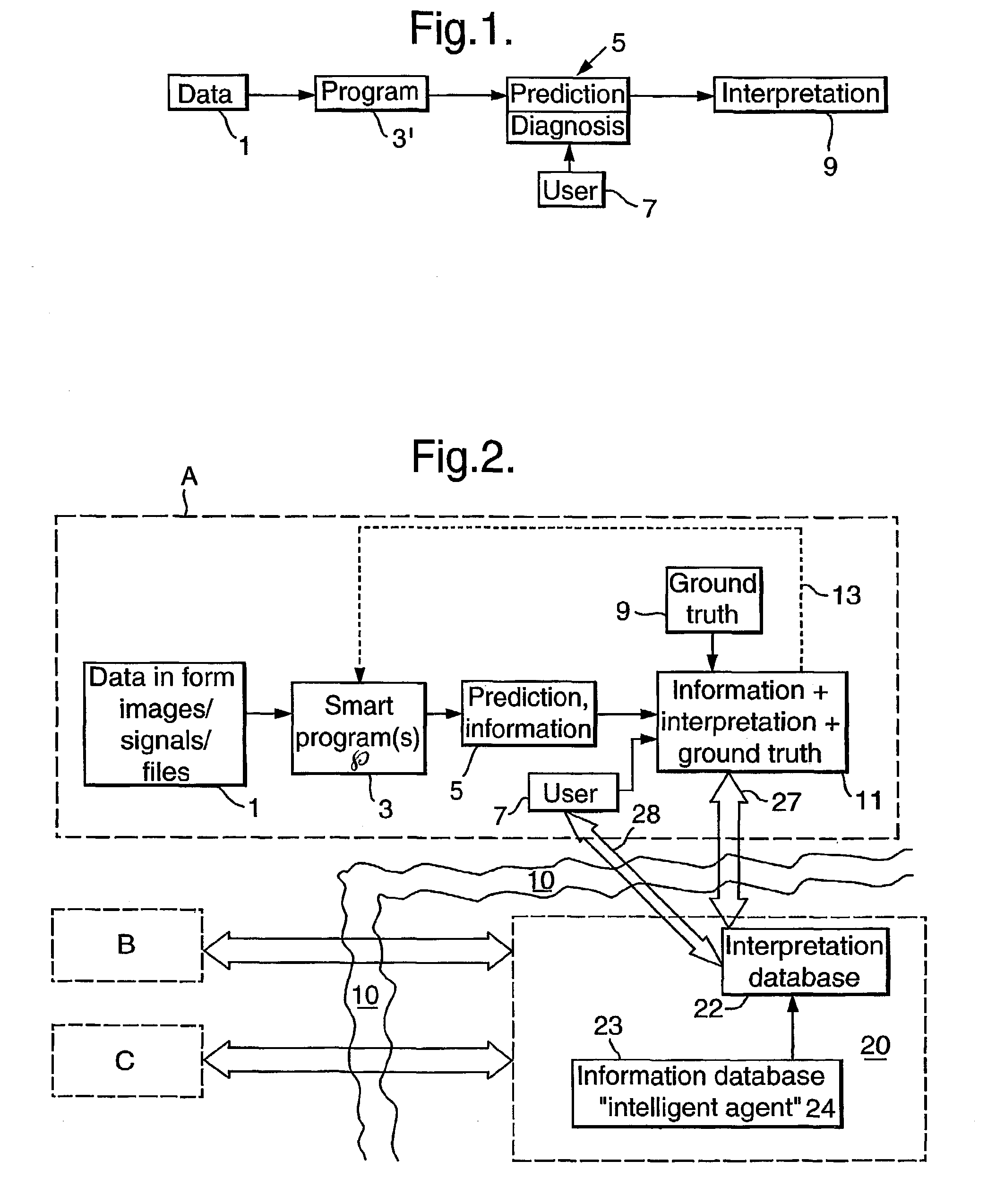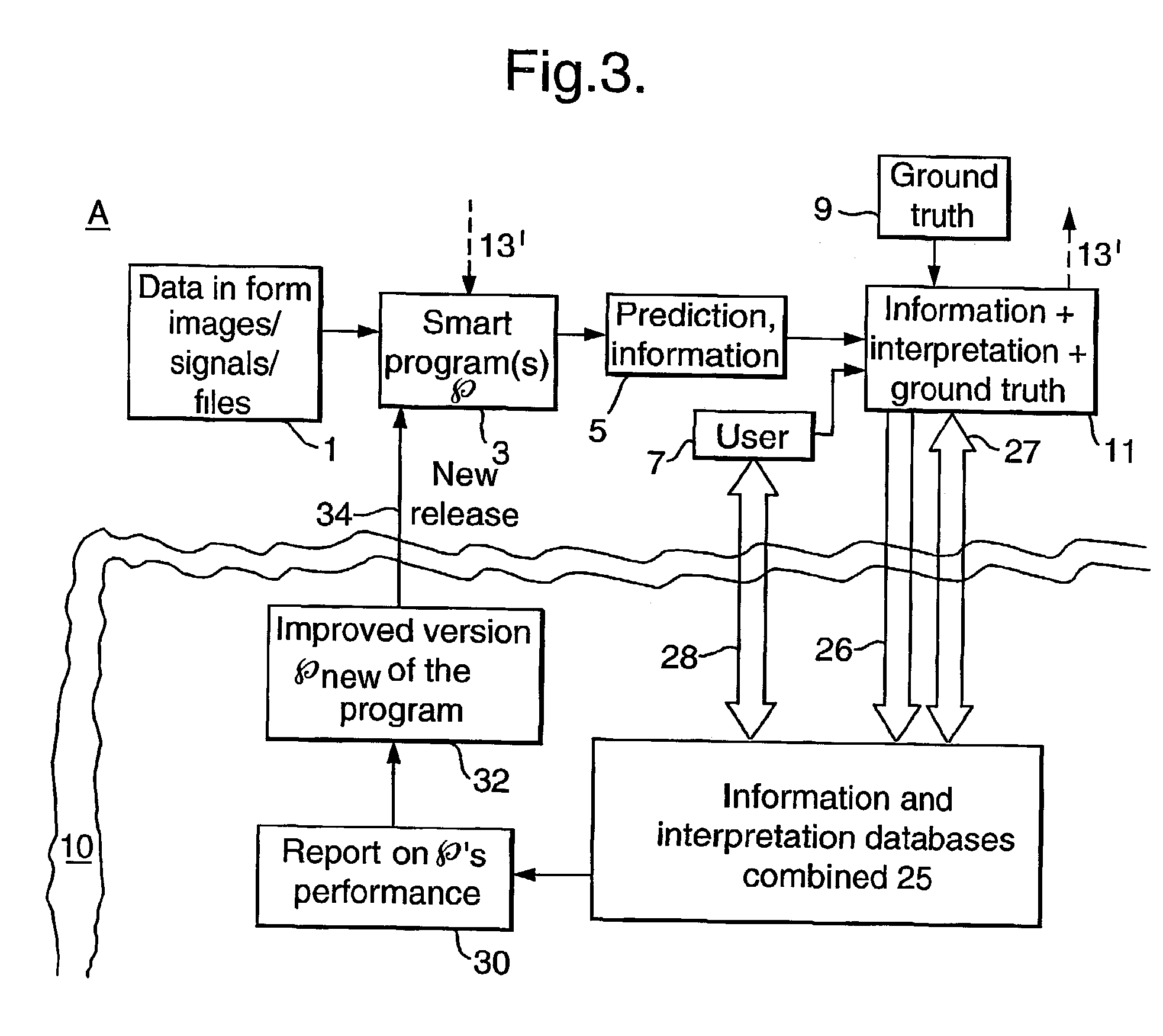Processing data for interpretation
- Summary
- Abstract
- Description
- Claims
- Application Information
AI Technical Summary
Benefits of technology
Problems solved by technology
Method used
Image
Examples
Embodiment Construction
[0030]An embodiment of the invention is illustrated schematically in FIG. 2. It can be seen that the operation at the local site A is in many ways similar to that illustrated in FIG. 1, but that the local system can communicate with a database 20 and the program 3 is a “smart” program which can be improved by feedback 13. Thus the smart program 3 can learn from the “user truth” provided by local user 7 (which may itself be based partly on ground truth 9), as well as from “ser truth” derived from the database 20. Only one local user A is illustrated in detail but it will be appreciated that the system comprises a plurality of users as illustrated at B and C, at geographically separate locations. The local users A, B, C communicate with the database 20, which is illustrated as being remote from the users, via an internetwork 10 such as the Internet. The use of the Internet allows for easy accessibility. However, it is possible to arrange for communication via an intranet, a dial-up co...
PUM
 Login to View More
Login to View More Abstract
Description
Claims
Application Information
 Login to View More
Login to View More - R&D
- Intellectual Property
- Life Sciences
- Materials
- Tech Scout
- Unparalleled Data Quality
- Higher Quality Content
- 60% Fewer Hallucinations
Browse by: Latest US Patents, China's latest patents, Technical Efficacy Thesaurus, Application Domain, Technology Topic, Popular Technical Reports.
© 2025 PatSnap. All rights reserved.Legal|Privacy policy|Modern Slavery Act Transparency Statement|Sitemap|About US| Contact US: help@patsnap.com



